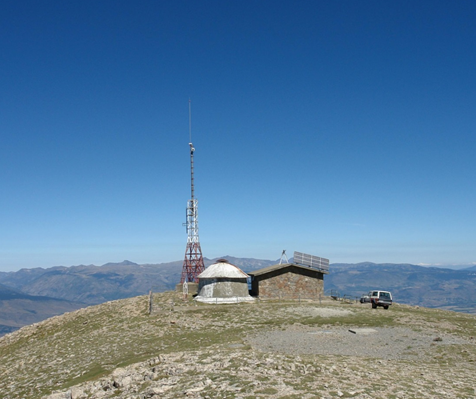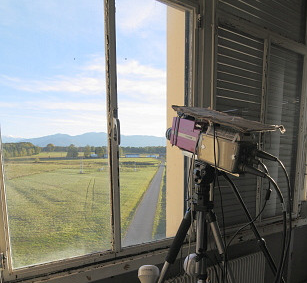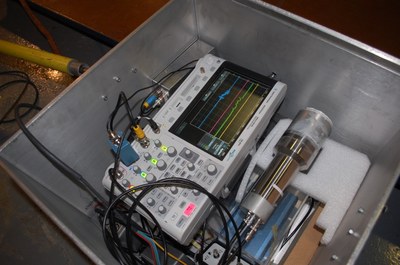Ebro Valley Laboratory
Northeastern Spain has proven to be an ideal place with abundant thunderstorms and sprites during a long thunder season. One of the main technical objectives of our group is to establish an area in Europe for lightning and TLE research. We call it Ebro Valley Laboratory or the Transient Luminous Events Laboratory (TLEL). The TLEL will represent the reference natural environment laboratory for Europe.

Precedent laboratories in the world are: Langmuir Laboratory in the US and Camp Blanding in Florida.
Several cameras have been installed within the TLEL area. In order of importance, the first camera (#1) is the Eagle Nest Tower camera (Alp-Girona-Spain-2537 m). This is the first intensified high speed video camera available in Europe for TLE and lightning observations. A second camera in northeastern Spain is located in central Catalonia (#2). This is a low light sensitive CCD video camera. Recently a third camera (#3) was installed in Sierra Nevada at (Observatorio de Sierra Nevada Instituto Astrofisica de Andalucia IAA CSIC 2850m). Additional cameras are available from our ASIM international cooperators. The first camera (#4) is installed at Observatoire du Pic du Midi (2880m) low light CCD video camera and photometer. The #5 camera was installed two years ago in Corsica. Both #3 and #4 cameras are managed by the Danish Space Center and both are fully available for our observations in the Gamma-ray imaging (GRI project. Also in the framework of the GRI project cameras #6 and #7 were installed in Lanemmezant and Toulouse (France) by the international member of GRI Dr. Serge Soula (Laboratoire d’Aerologie OMP – CNRS –Toulouse ). The indicated #8 camera is the next site to be installed. This will be at the Pico del Buitre (1956 m) and will consist of a second intensified high speed camera supported by the GRI and ASIM projects. The availability of two high speed cameras will allow for the first time triangulations of high speed observations and then a full space-time resolution of the TLE events. The GRI II project will represent the site consolidations and will work on the full remote control from a TLEL Control Center of the high speed cameras.
With the Ebro Valley Laboratory completed, optical high-speed recordings of lightning and TLE will be able to be compared to high-resolution 3D lightning data, x/gamma ray detections, electromagnetic waveforms, and satellite-based observations/detections.
Some of the places where we have cameras, we have some other facilities related to lightning observations and measurements. Here you have more details about them.






Share: